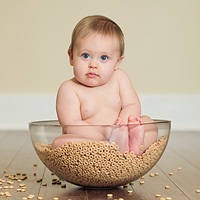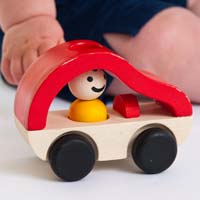Introducing Solid Foods to Baby

What to serve
It's best to start with an iron-fortified, single-grain cereal–and rice is usually a safe bet because it's least likely to cause an allergic reaction, says Saab. (By six months of age, an infant's iron stores are depleted, so it's important to offer a food that contains iron.)
The main thing to remember when introducing new foods is to space them out–one new food about every three days. This way if your infant does have a reaction, you'll know which food caused it. Start slowly with two to three teaspoons a day and work up from there.
And don't worry about whether to try fruit or veggies first–it's a myth that babies who start with fruit won't like their veggies later on, says Saab. Because their taste buds aren't fully developed, infants aren't as sensitive to sweet and salty. That said, baby food doesn't have to be bland. "It's a good time to add flavoring while they're still willing to try new things," says Saab. So don't hesitate to add herbs and spices to make things a little more interesting for your infant.



